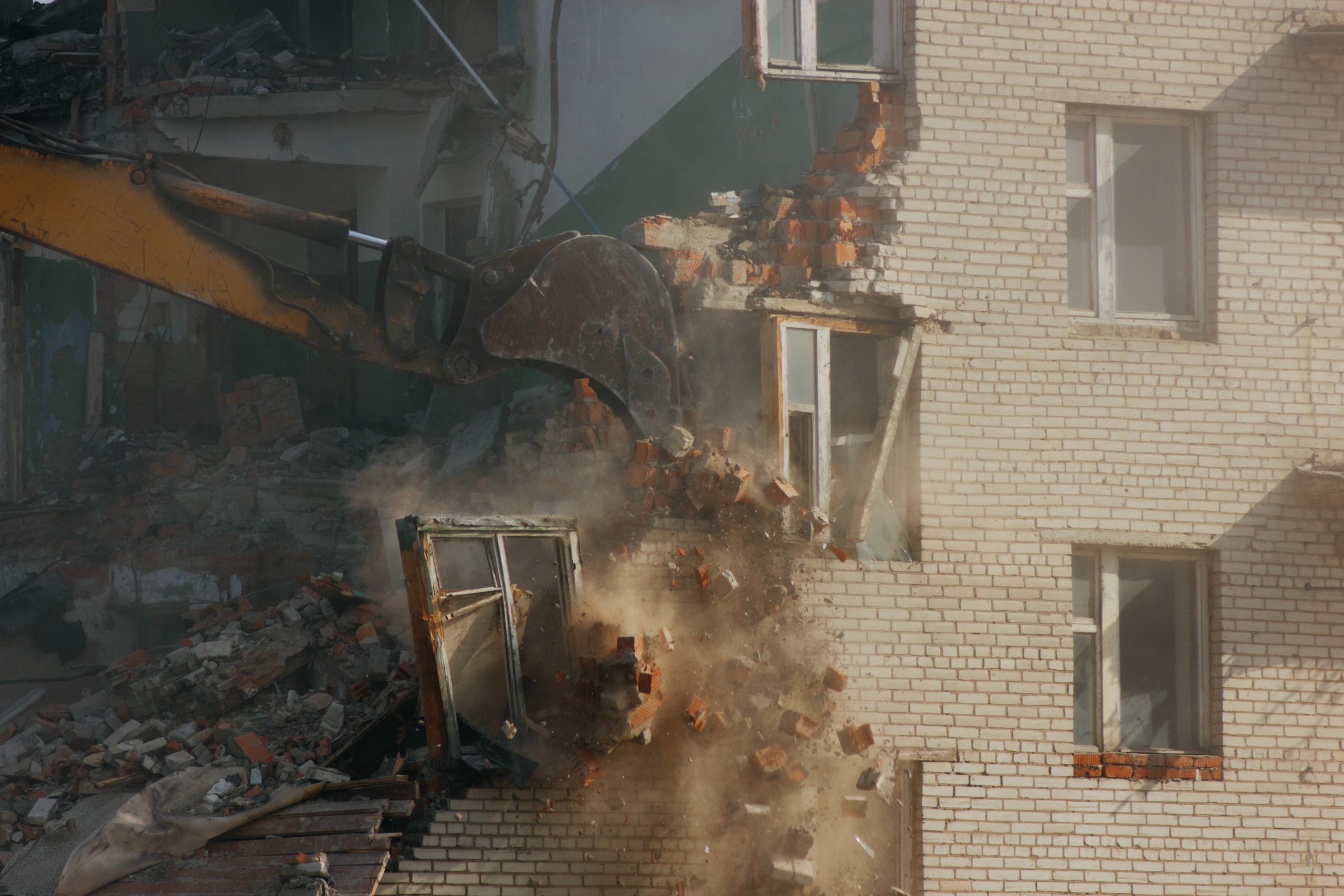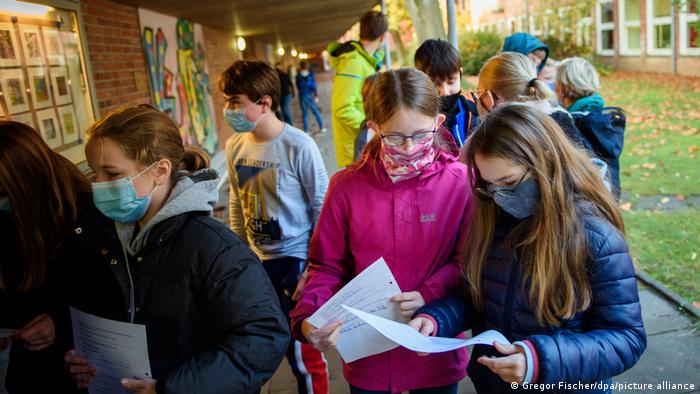Twitter permanently bans Donald Trump over Capitol violence
Twitter has permanently suspended President Donald Trump's account after the violence at the Capitol building. The company cited the risk of further incitement in its decision.

Twitter said Trump's account was suspended "due to the first of future incitement of violence"
Twitter has announced it is permanently suspending President Donald Trump's account following the Capitol violence.
Twitter said late on Friday night that it was banning Trump's account "due to the risk of further incitement of violence."
This is a breaking news story. More to follow.
UPDATED
Twitter said Trump's account was suspended "due to the first of future incitement of violence"
Twitter has announced it is permanently suspending President Donald Trump's personal account, @realDonaldTrump, and the @TeamTrump campaign account following the Capitol violence.
Twitter said late on Friday night that it was banning Trump's account "due to the risk of further incitement of violence."
"In the context of horrific events this week, we made it clear on Wednesday that additional violations of the Twitter Rules would potentially result in this very course of action," Twitter said in a statement.
Trump calls suspension a ban on free speech
Trump tried to bypass the ban on Friday night by tweeting from @POTUS, the official US government account for the country’s leader.
Trump took to the official @POTUS account to accuse Twitter of "trying to silence me."
"Twitter has gone further and further in banning free speech, and tonight, Twitter employees have coordinated with the Democrats and the Radical Left in removing my account from their platform, to silence me -- and YOU, the 75,000,000 great patriots who voted for me," he said.
The tweets were subsequently deleted as Twitter does not allow using another account to evade a suspension.
Twitter's decision comes hours after Trump gained access to his Twitter account after being temporarily suspended from the microblogging site on Thursday. The permanent ban keeps the president from using what was one of his most-common means of directly addressing the public and making policy as well as personal statements.
According to the Twitter statement, on Friday Trump tweeted:
"The 75,000,000 great American Patriots who voted for me, AMERICA FIRST, and MAKE AMERICA GREAT AGAIN, will have a GIANT VOICE long into the future. They will not be disrespected or treated unfairly in any way, shape or form!!!"
This was followed by another tweet, where he announced that he will not attend President-elect Joe Biden's inauguration.
"To all of those who have asked, I will not be going to the Inauguration on January 20th."
Twitter said it is suspending the account, which had more than 88 million followers, over violation of its policy against the glorification of violence.
"After assessing the language in these Tweets against our Glorification of Violence policy, we have determined that these Tweets are in violation of the Glorification of Violence Policy and the user @realDonaldTrump should be immediately permanently suspended from the service
Trump also banned on Facebook
Trump was also "indefinitely" banned from Facebook and its subsidiary Instagram on Thursday, with the pressure building on social media platforms to ban the outgoing president.
The call follows Wednesday's US Capitol storming, which saw pro-Trump supporters disrupting a joint congressional session in Washington DC to confirm President-elect Joe Biden's 2020 election win.
Whether to address matters of diplomacy or scathing attacks on rivals, Trump has used social media as his bull-horn throughout his presidency.
Social media continues purge
Google suspended alt-right social networking service, Parler, from its Play Store late on Friday evening over posts that could further fuel violence, according to reports by Politico and The New York Times.
The suspension comes as tech giant Apple also mulls a ban on Parler.
Apple has reportedly given Parler 24 hours to implement a plan to fully moderate its platform, failing which it could face an ouster from Apple's App Store.
According to BuzzFeed News, Apple wrote to Parler over complaints that the service had been used to plan and coordinate the Capitol storming.
Earlier on Friday, Twitter also permanently evicted former Trump aides Michael Flynn and Sidney Powell for pushing far-right conspiracy theories and QAnon's content.
"Given the renewed potential for violence surrounding this type of behavior in the coming days, we will permanently suspend accounts that are solely dedicated to sharing QAnon content," Twitter said.
Michael Flynn, Trump’s former national security adviser and Sidney Powell, an ex-Trump campaign lawyer, have both raised doubts over the president’s defeat.
Reactions to ban
While many on Twitter celebrated the ban, Donald Trump, Jr., lashed out at Twitter over the suspension of his father's account, saying "free speech no longer exists" in the country.
He said Trump's account was banned while dictatorial regimes are allowed to have a presence on Twitter, "with no issue despite threatening genocide to entire countries."
Jason Miller — a senior adviser to Trump and the chief spokesperson for his 2016 presidential campaign — called Twitter "disgusting" in a tweet addressed to the platform's co-founder and CEO Jack Dorsey.
Issued on: 09/01/2021 - 00:55

Text by: NEWS WIRES
Twitter Inc said on Friday that it has permanently suspended U.S. President Donald Trump's account due to the risk of further incitement of violence following the storming of the U.S. Capitol on Wednesday.
The suspension of Trump's account, which had more than 88 million followers, silences his primary megaphone days before the end of his term and follows years of debate about how social media companies should moderate the accounts of powerful global leaders.
"After close review of recent Tweets from the @realDonaldTrump account and the context around them we have permanently suspended the account due to the risk of further incitement of violence," the company said in a tweet.
It was the first time Twitter has banned a head of state, the company confirmed.
Social media companies have moved swiftly to crack down on Trump and some of his prominent right-wing allies and supporters in the wake of the turmoil in Washington, D.C., on Wednesday, which led to five deaths.
Trump has repeatedly used Twitter and other platforms to claim his defeat in the Nov. 3 election was due to widespread voter fraud and to share other conspiracy theories, and had urged supporters to come to Washington on Wednesday and march on the Capitol to protest the election result.
Facebook Inc said earlier this week it was suspending his account through until at least the end of his presidential term.
The Republican president is due to hand over to Democratic President-elect Joe Biden on Jan. 20.
In a blog post on Friday, Twitter said that two of the president's tweets posted that day were in violation of its policy against the glorification of violence.
Twitter had temporarily blocked Trump's account on Wednesday following the siege of Capitol Hill, and warned that additional violations by the president's accounts would result in a permanent suspension.
Trump was required to delete three rule-breaking tweets before his account was unblocked. He returned to Twitter on Thursday with a video acknowledging that Biden would be the next U.S. president.
Twitter said that Trump's tweet that he would not be attending Biden's inauguration was being received by a number of his supporters as confirmation that the November election was not legitimate.
It said another tweet praising "American Patriots" and saying his supporters "will not be disrespected or treated unfairly in any way, shape or form!!!" could be seen as "further indication that President Trump does not plan to facilitate an orderly transition."
Critics of major social media platforms, including top Democratic politicians, praised Twitter's move and said it was long overdue, while Trump suppporters expressed outrage.
The president's son, Donald Trump Jr., in a tweet on Friday decried the ban, saying dictators who had threatened genocide continued to have Twitter accounts. He did not provide names.
The White House had no immediate direct comment. The Trump campaign's Twitter account criticized the company for "silencing" the president of the United States.
Using the @POTUS account, Trump said he would look at building his own platform.
'Looting and shooting'
Trump's prolific use of social media helped propel him to the White House in 2016. He has used his personal @realDonaldTrump account, which has sometimes tweeted more than 100 times a day, to reach supporters, spread misinformation and even fire staff.
In a 2017 interview on Fox Business, Trump said "I doubt I would be here if it weren’t for social media, to be honest with you," according to a transcript released by the network.
Both Twitter and Facebook have long afforded Trump special privileges as a world leader, saying that tweets that may violate the company's policies would not be removed because they were in the public interest. They said he would lose access to those privileges upon leaving office, however.
Twitter last year started labeling and putting warnings on Trump's tweets that broke its rules against glorifying violence, manipulated media or sharing potentially misleading information about voting processes.
In May, Twitter affixed a warning label to a Trump tweet about widespread anti-racism protests over the police killing of George Floyd that included the phrase "when the looting starts, the shooting starts." Facebook, which has come under fire from employees and lawmakers for not doing more about Trump's inflammatory posts, declined to act on the same message.
Trump still has access to the official @WhiteHouse and @POTUS accounts but will lose this when his presidential term ends. Asked if Trump could create another account, a Twitter spokeswoman said if the company had reason to believe he was using accounts to evade Friday's suspension, those accounts too could be suspended.
(REUTERS)
Twitter boots Trump to stop violence-sparking
tweets
Issued on: 09/01/2021 - 
San Francisco (AFP)
Twitter shut down President Donald Trump's account Friday, booting him from the global service to prevent another attack on the US Capitol building.
Trump had fervently used @realDonaldTrump for proclamations, accusations and misinformation unchallenged for his entire time in office.
Twitter' decision to permanently suspend Trump is considered overdue by critics who argue he has gotten away with abuses, but has inflamed members of the far-right who equate fact-checking with stifling free speech.
"After close review of recent Tweets from the @realDonaldTrump account," Twitter said in a blog post explaining its decision, "we have permanently suspended the account due to the risk of further incitement of violence."
Twitter late Friday blocked efforts by Trump to sidestep the ban.
He fired off tweets from the official presidential account @POTUS, accusing the company of conspiring with the "Radical Left." The social network quickly deleted the tweets.
Trump also tweeted from the @TeamTrump campaign account, which was soon suspended.
"Using another account to try to evade a suspension is against our rules," Twitter told AFP.
"We have taken steps to enforce this with regard to recent Tweets from the @POTUS account."
Twitter blocked Trump temporarily after the deadly attack on the US Capitol Wednesday, warning the suspension could become permanent.
He was suspended Friday after a pair of tweets: in one, Trump vowed that none of his supporters would be "disrespected." In another, he said he would not attend successor Joe Biden's inauguration on January 20, as is customary.
"These two Tweets must be read in the context of broader events in the country and the ways in which the President's statements can be mobilized by different audiences, including to incite violence, as well as in the context of the pattern of behavior from this account in recent weeks," Twitter said.
"We understand the desire to permanently suspend him now," said ACLU senior legislative counsel Kate Ruane.
"But, it should concern everyone when companies like Facebook and Twitter wield the unchecked power to remove people from platforms that have become indispensable for the speech of billions."
Trump has a press team and can easily turn to sympathetic outlets such as Fox News, while other people who could be shut out by the social networks don't have that luxury, Ruane noted.
Social media companies such as Twitter have the right to decide what appears on their platforms and set standards for appropriate content. The First Amendment right to free speech prevents governments from stifling expression and does not apply to private businesses.
- Talk of new attack -
Twitter said it also factored in that plans for more armed protests have been proliferating on and off the service, including a proposed second attack on the US Capitol and state capitol buildings on January 17.
Trump's tweeted statement about not attending the Inauguration has been received by some supporters as his continued rejection of the election's legitimacy and a sign that the event would be a "safe target" since he won't be there, according to Twitter.
Supporters also viewed the tweets' wording as praise for those involved in what has been described as a coup attempt and indication he does not plan to yield power to President-elect Biden, Twitter said in the post.
"We are living Orwell's 1984," Donald Trump Jr. tweeted from his account. "This is absolute insanity!"
- Fact-check fury -
Trump, who at 81.7 million followers had one of Twitter's 10 most popular accounts, preferred using the platform to get out his message without submitting himself to questions from reporters.
But the US leader has been at war with his favored social media platform since the presidential election, after Twitter took the unprecedented decision to fact-check some of his tweets.
Twitter confirmed Friday that several hundred employees signed a letter to chief executive Jack Dorsey saying they were disturbed by the "insurrection" carried out by Trump supporters, who had been rallied by the president.
The employees called for Twitter to assess the role its platform played in Wednesday's events.
- QAnon purge -
Twitter also removed the accounts of Michael Flynn and other high-profile Trump supporters who promoted the QAnon conspiracy theory.
"The accounts have been suspended in line with our policy on Coordinated Harmful Activity," Twitter told AFP.
"Given the renewed potential for violence surrounding this type of behavior in the coming days, we will permanently suspend accounts that are solely dedicated to sharing QAnon content."
Flynn has met with Trump at the White House to collaborate about how to overturn the presidential election results.
Facebook also has banned Trump from the platform "indefinitely" due to his efforts to incite violence at the US Capitol, according to chief executive Mark Zuckerberg.
Zuckerberg said a one-day ban imposed on Trump's accounts on Facebook and Instagram was extended because of Trump's "use of our platform to incite violent insurrection against a democratically elected government."
The announcement came after the outgoing president was locked out of all major social media platforms due to his false claims about the legitimacy of his loss to Biden, and for inciting the angry mob that stormed the US Capitol.

















